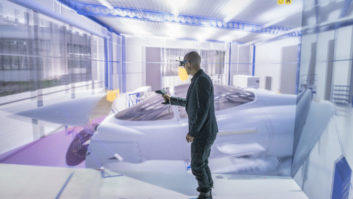 Is the use of interactive technologies in museums now standard or is it only for specific types of exhibitions/exhibits?
Is the use of interactive technologies in museums now standard or is it only for specific types of exhibitions/exhibits?
The landscape of museums is rapidly evolving, driven by a surge in interactive technologies. From touchscreens and augmented reality to virtual reality experiences, these tools are redefining how we engage with history, art, and science. They’re turning museum visits into dynamic, interactive journeys, catering to a generation that seeks to be part of the story, not just passive observers.
This technological revolution is crucial in informal education spaces like aquariums and planetariums. Traditionally more passive, these venues are now embracing interactive elements, transforming the way visitors learn and experience content. It’s a shift from mere observation to active participation, aligning with the modern desire for engagement and interactivity.
In recent years, it has been rare to find a museum or visitor centre that doesn’t employ some type of interactive technology, and such tools are finding their way into exhibitions of all kinds, providing curators with new ways to unleash their creativity and tell more engaging stories.
While interactive touch screens have become a common sight, the introduction of spherical screens is a game-changer. Positioned towards the end of an exhibit or as a central showcase, these screens stand out with their unique globe-like design and 360-degree interactivity. They’re not just screens; they’re immersive portals that invite visitors to explore and interact in ways flat screens can’t match.
The beauty of these spherical displays lies in their ability to hold attention longer, accommodate multiple users at one time, and provide a constantly evolving experience. Spherical displays are a more unique and intriguing proposition to museum visitors, and research into human interaction with these spheres supports what we see evidence of every day when users interact with our displays. Children and young people are particularly drawn to spherical displays and they provide a high level of social balance in groups, allowing multiple users to simultaneously interact and discuss content.
Content on interactive screens, whether flat or spherical, can be updated regularly, ensuring that every visit is unique and exciting. This approach resonates deeply in today’s world, where audiences crave not just information but engagement and involvement.
In summary, while interactive technologies have become a mainstay in museums, it’s innovations like spherical screens that are pushing the boundaries further. They embody the future of museum experiences – interactive, engaging, and constantly renewing, inviting visitors to not just view, but be an integral part of the learning and discovery process.
What kinds of technology are being used for interactive exhibits?
In the realm of interactive exhibits, particularly within museums, there has been a notable shift in focus. Initially, there was a sort of ‘race for size’ — a trend towards creating large, imposing displays and experiences. This approach often prioritised scale over personal engagement. However, recent trends indicate a move towards more personalised, one-to-one experiences. Visitors are increasingly seeking interactions that are tailored to their individual interests and levels of understanding.
In this context, the advent of spherical screens marks a significant development. These screens are not about broadcasting information to the masses, but rather about facilitating intimate, one-to-one conversations with visitors. The unique format of spherical screens allows for a more personal and engaging interaction. They enable multiple people to simultaneously view and interact with content, but in a manner that feels individual and tailored to each user.
This ability to generate immersive experiences for groups is vital for visitors and centres for casual learning, since school groups, and families, are a huge market for these organisations. As the bar is set ever higher for interactive technology in the sector, visitors are becoming more discerning, and visitor centres are expected to cater to large groups by enabling them to partake simultaneously in immersive experiences that deliver a level of personalisation to each individual.
This shift is reflective of a broader trend in technology and user experience, where the emphasis is on creating connections and meaningful interactions rather than overwhelming with sheer size or spectacle. Museums are adapting to this change by employing technologies like spherical screens, which align with the desire for more personalised, engaging, and conversational experiences.
Such technologies are invaluable in a museum setting, as they cater to a diverse audience with varying interests and abilities. By providing experiences that are more individualised and interactive, museums can foster deeper connections between the visitor and the content, enhancing both educational outcomes and overall visitor satisfaction. This approach is crucial in ensuring that museums remain relevant and engaging in an era where digital interaction is increasingly personalised.
Are AR and virtual technologies in particular becoming widely used? If so, for what kind of applications?
The role and adoption of Augmented Reality (AR) and Virtual Reality (VR) technologies present a complex picture. Despite the potential these technologies hold, their practical application and acceptance within the museum context reveal a different narrative.
When it comes to integrating digital experiences in museums, smartphones have predominantly been used for simpler, more familiar functionalities like scanning QR codes. This application aligns with visitor preferences for straightforward, unobtrusive enhancements to their museum experience. While smartphones are capable of supporting AR, the reality is that AR and VR technologies in museums have seen a fluctuating journey, with companies in this space frequently emerging and then disappearing, indicative of the challenge in finding a sustainable and successful application for these technologies within this particular environment.
Indeed, one could argue that a significant portion of museum-goers seek an escape from the constant connectivity of their digital lives. In these cultural spaces, the desire is often to disconnect from devices like smartphones and immerse oneself in the physical and historical world that museums encapsulate. This sentiment guides the adoption and integration of new technologies in museums. The current visitor preference seems to lean towards experiences that don’t rely heavily on their personal devices, especially for technologies like AR and VR, which have yet to find a foothold in terms of widespread, successful implementation in the museum context.
This scenario underscores the crucial aspect of visitor-driven demands in shaping museum experiences. While the allure of AR and VR is undeniable, their adoption is intricately tied to the desires and comfort levels of the museum audience. At present, there appears to be a preference for more traditional, less digitally invasive experiences within these spaces. Museums, therefore, continue to explore and adapt, finding the right balance between innovative technology, like spherical displays, and the preservation of a space where visitors can engage with exhibitions, displays and content, away from the digital saturation of their everyday lives through their phone. They want to reach out, touch, and learn. At Pufferfish, we aim to facilitate immersive experiences that allow audiences to do just that.
What other trends are you seeing and how is technology for this sector likely to develop?
When we talk about the evolving role of technology in museums, it’s crucial to remember that ‘content is king’. You could line up a wall with the world’s best screens, but without compelling content, they’re just blank canvases. This principle holds true for spherical screens as well. It’s always a fine balance between the hardware technology and the content it delivers.
Think of it this way: the technology – whether it’s spherical screens, interactive displays, or AI-driven installations – is like a stage. But what really captures the audience’s attention is the performance on that stage, which in this case, is the content. Museums are recognising this more than ever. They’re investing in technologies that not only wow visitors but also tell a story, educate, and provoke thought.
With AI stepping into the realm of content creation, it’s becoming easier and quicker for museums to craft these stories. But it’s not just about speed; it’s about quality and relevance. The content needs to resonate with visitors, to connect with them on a personal level. That’s where the magic happens.
In the end, it’s this combination of cutting-edge hardware and meaningful content that’s shaping the future of museums. It’s about asking, “What story are we telling?” and then using the best of technology to tell that story in the most engaging way possible. That’s the direction we’re heading in, and it’s incredibly exciting. The possibilities are limitless, and it’s all about harnessing this potential to create experiences that educate, inspire, and endure.







